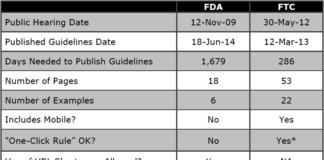A shift toward more conservative medication-prescribing practices would serve patients better and counterbalance prescribing pressures from the drug industry, according to a review article published Online First today by Archives of Internal Medicine, one of the JAMA/Archives journals. The article is part of the journal’s Less Is More series.
The authors argue that physicians — especially young physicians, “who lack historical knowledge of past drug harms and withdrawals from the market” — should resist the urge to prescribe the “latest and greatest” drugs, a tendency, say the authors, that is “congruent with the messages and interests of the pharmaceutical industry.”
The proposed “Principles of Conservative Prescribing” address practically every tactic the pharmaceutical industry uses to increase prescriptions including, Direct-to-Consumer (DTC) advertising, sales rep distribution of peer-reviewed literature to physicians (which the FDA allows), off-label promotion of drugs (which is illegal, but often done by pharmaceutical companies who are sometimes caught doing it!), pharma-sponsored CME or education from “‘experts’ with conflicts of interest,” using surrogate endpoints rather than outcomes to measure clinical trial success, etc.
With regard to DTC advertising, for example, the authors obviously believe that “with the growth of direct-to-consumer advertising, clinicians are under greater pressure from their patients to prescribe advertised drugs.” The authors warn physicians not to take the “path of least resistance.” To which I have two comments: (1) the path of least resistance is also the path to profits, whereas the other path leads to bankruptcy, and (2) the authors obviously have not heard that DTC advertising has been proved NOT to influence physician prescribing (see “Advertisers Don’t Know How DTC Works. Say wha?“).
Here’s the abstract that summarizes all the principles:
Judicious prescribing is a prerequisite for safe and appropriate medication use. Based on evidence and lessons from recent studies demonstrating problems with widely prescribed medications, we offer a series of principles as a prescription for more cautious and conservative prescribing. These principles urge clinicians to (1) think beyond drugs (consider nondrug therapy, treatable underlying causes, and prevention); (2) practice more strategic prescribing (defer nonurgent drug treatment; avoid unwarranted drug switching; be circumspect about unproven drug uses; and start treatment with only 1 new drug at a time); (3) maintain heightened vigilance regarding adverse effects (suspect drug reactions; be aware of withdrawal syndromes; and educate patients to anticipate reactions); (4) exercise caution and skepticism regarding new drugs (seek out unbiased information; wait until drugs have sufficient time on the market; be skeptical about surrogate rather than true clinical outcomes; avoid stretching indications; avoid seduction by elegant molecular pharmacology; beware of selective drug trial reporting); (5) work with patients for a shared agenda (do not automatically accede to drug requests; consider nonadherence before adding drugs to regimen; avoid restarting previously unsuccessful drug treatment; discontinue treatment with unneeded medications; and respect patients’ reservations about drugs); and (6) consider long-term, broader impacts (weigh long-term outcomes, and recognize that improved systems may outweigh marginal benefits of new drugs). [Arch Intern Med. 2011;10.1001/archinternmed.2011.256.]
I doubt if a young physician just starting private practice could build a financially successful practice based on these principles, which are specifically designed as tricks for new dogs. These physicians have to compete with the old dogs out there who have been weaned by the drug industry to expect the industry to pay for everything in return for which they will prescribe their drugs — especially new, unproven in the real world drugs.
The authors, in fact, recommend that physicians obey the “7-year rule” when prescribing; ie, “wait 7 years before using a new drug.” Wholly cow! The authors cite a couple of studies purporting to show that “it often takes 5 to 10 years to identify significant adverse effects.”
Adverse effects figure large in the Principles. I would go so far as to say that adverse drug effects form the principles’ principal target! Maybe it is just a coincidence that recently I came across news reports that adverse drug events are one of the leading causes of death in the U.S. and other developed countries around the world.
At one point, the authors ask “Could ‘fibromyalgia’ pain be statin-induced myopathy?” [authors’ quotes, not mine, around fibromyalgia]. This prompted my own question: Is it just a coincidence that Pfizer, which produces Lipitor, the #1 selling statin, is also aggressively marketing Lyrica for the treatment of fibromyalgia pain? Coincidentally, a few days ago the FDA recommended changes in the Zocor (another statin drug) label (see “FDA approves redesigned labels for some Merck drugs“). The mind boggles!
The authors advise physicians not to ignore any problem that develops while a patient is taking a medication, “no matter how unusual or unlikely a symptom a patient reports… always consider that it might be drug related.”
I am sure the drug industry will have something to say about that!
[This post originally appeared in Pharma Marketing Blog. Make sure you are reading the source to get the latest comments.]









![6 Digital Tools at the Center of Healthcare Digitalization [INFOGRAPHIC]](http://ec2-54-175-84-28.compute-1.amazonaws.com/pharma-mkting.com/wp-content/uploads/2021/04/6DigitalTools_600px-100x70.jpg)




